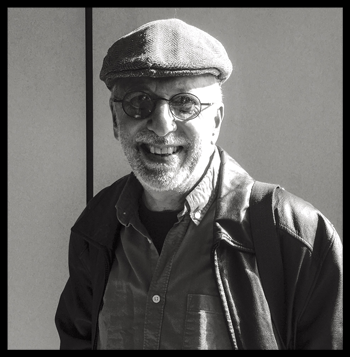Mark Freeman

I make films and teach filmmaking because I believe that motion pictures profoundly shape our attitudes, values and behavior. The images that we create and consume have real power. I am part of a community of filmmakers who act from a belief that the work we do can make a difference.
Documentary filmmaking is about telling stories. The stories I choose to tell are grounded in the experiences of ordinary people. I make community portraits. Each of my documentaries captures a moment in our shared social history, a fragment of our collective memory in a time of complex challenges and rapid change.
My career as a documentary filmmaker and teacher spans more than 40 years. I’ve spent a major part of my career working as an independent documentary filmmaker. On most of my productions I am the producer, director, writer, videographer and editor. I raise the funds, research the material, create the personal connections, shoot, record, structure and edit these films. I create programs that bring grassroots concerns to larger audiences.
Mad River: Hard Times in Humboldt County is about timber workers in California’s redwood forests. The Yidishe Gauchos is the story of immigrants from Eastern Europe making new lives on the Argentine pampas. Adobe architecture in New Mexico is the focus of Down to Earth. Indigenous artisans in the Ecuadorian Andes today are literally Weaving the Future. My community portraits have aired widely, including PBS, the Museum of Modern Art (NY), and the Smithsonian Institute’s National Museum of Natural History (Washington, D.C.). They have won numerous awards and international recognition at festivals, and are in the collection of libraries and universities throughout the country.
In San Diego County, I embarked on an “Encinitas Trilogy.” These documentaries are portraits of people who make a real difference in the life of their community. Edmund’s Island is a portrait of a homeless ‘news hawker’- an angel to his customers. Families and Flowers is the story of growers whose nurseries (and way-of-life) are shadowed by their neighbors’ million dollar homes. In Lines in the Sand tidal artist Kirk Van Allyn etches a sacred space with only ephemeral sand drawings.
Talking Peace is a portrait of Jews and Palestinians who are personally engaged in dialogue and peacemaking efforts in San Diego. Poetry Live(s) is a portrait of contemporary spoken word performance. Trolley Dances is about site-specific dance performances an annual event produced by Jean Isaacs San Diego Dance Theater. Queens Dream is a dance video shot at Niki de St. Phalle’s Queen Califia’s Magical Circle in Escondido, CA.
My most recent work includes dance films and documentaries shot in Indonesia, South Africa, Ghana, Italy and Portugal. These include Body Without a Brain, Rasa Dari Tari/The Soul Of Dance, dancedance/RE⬥VOLUTION, Conquest and Prison, Atena/Nets, Tomba Brion and Gifted.
These films have screened widely at festivals in Europe, Latin America and Asia.
Productions and other professional opportunities have brought me not only to Ghana, Indonesia, and South Africa, but also to Singapore, Portugal, France, Austria, China, Denmark, Mexico, Guatemala, Argentina, Ecuador, Costa Rica, Cuba and Israel. Working independently in the U.S. and overseas has shaped my vision. I bring an international perspective to my work and to my teaching.